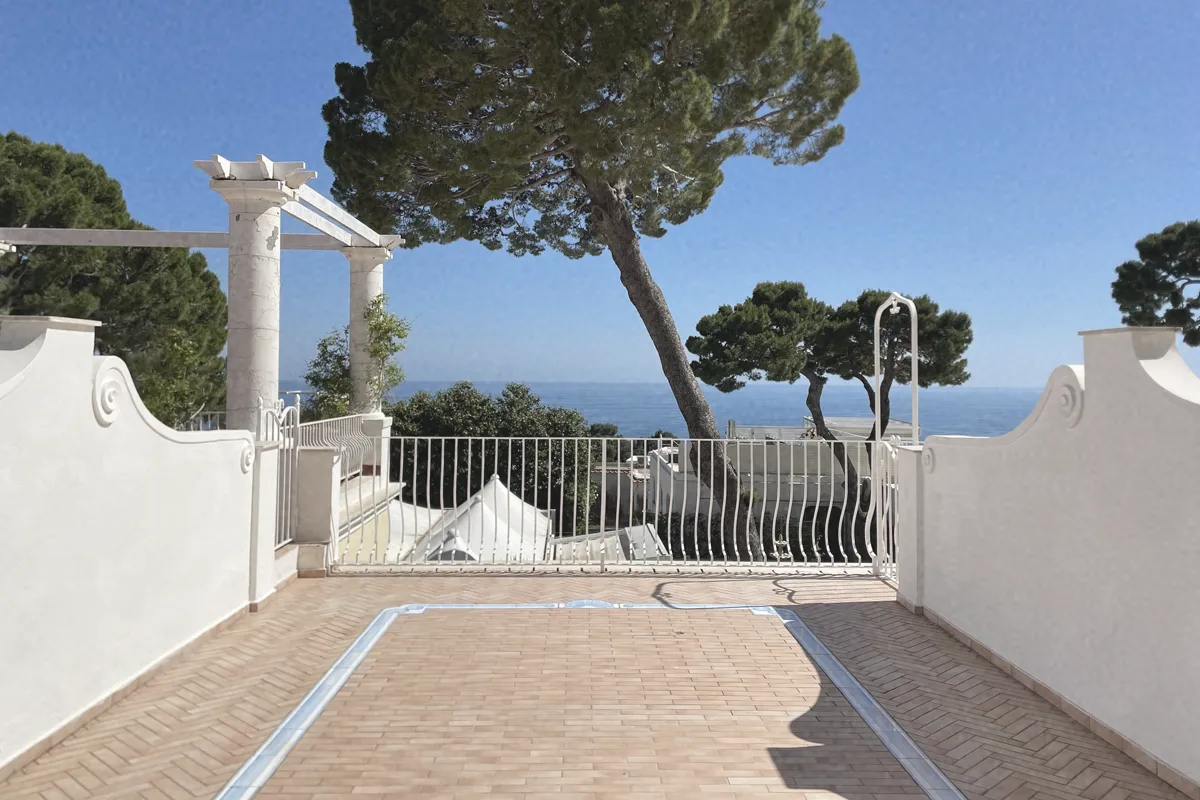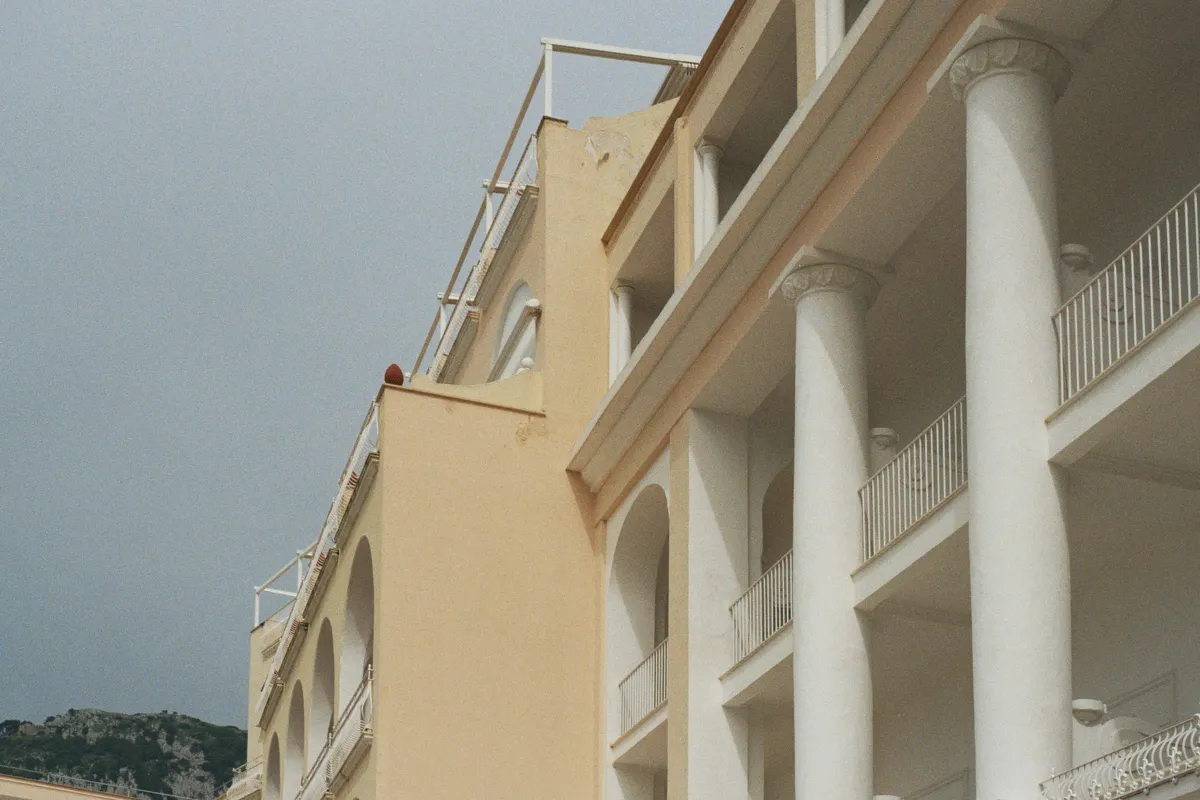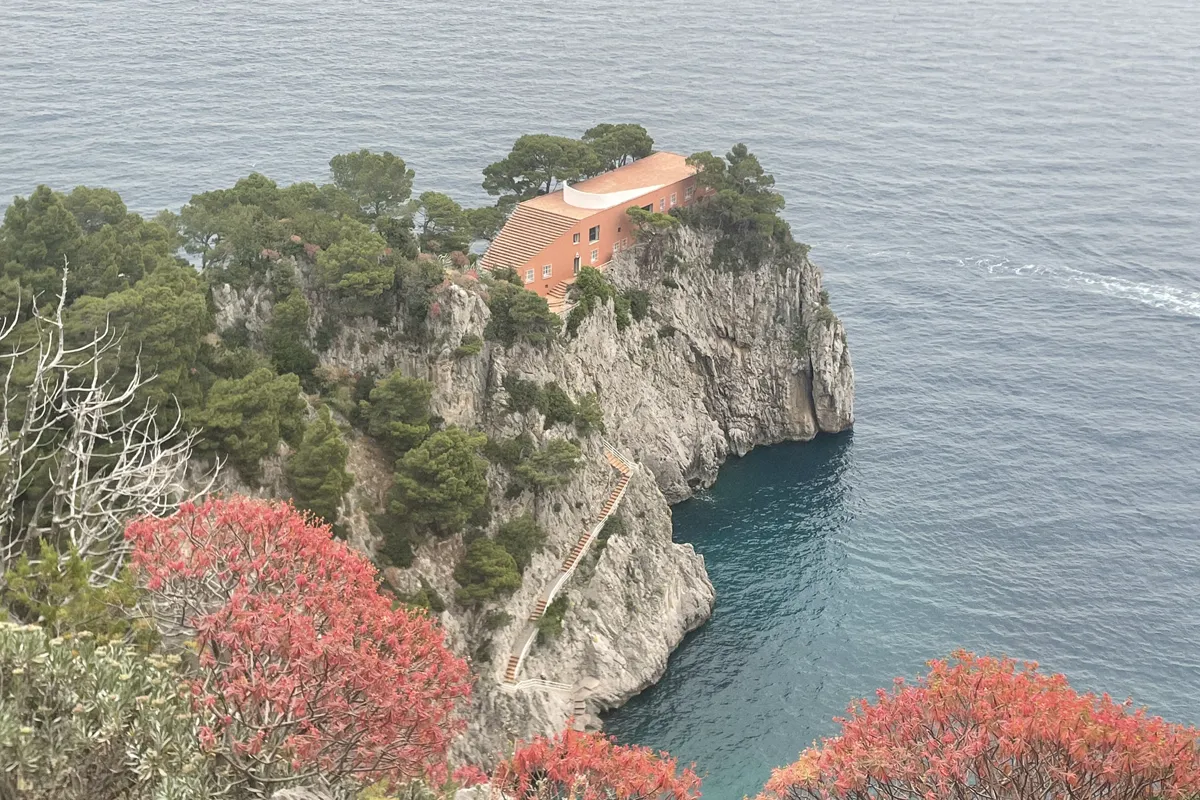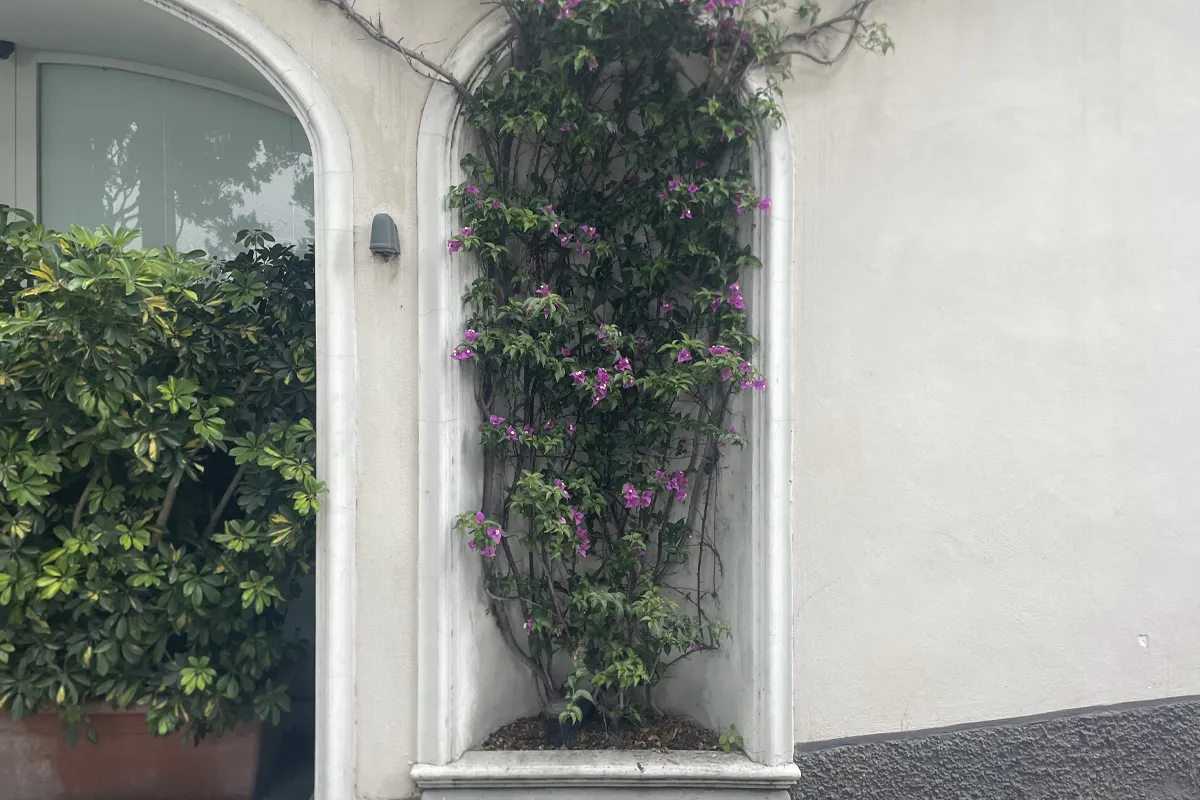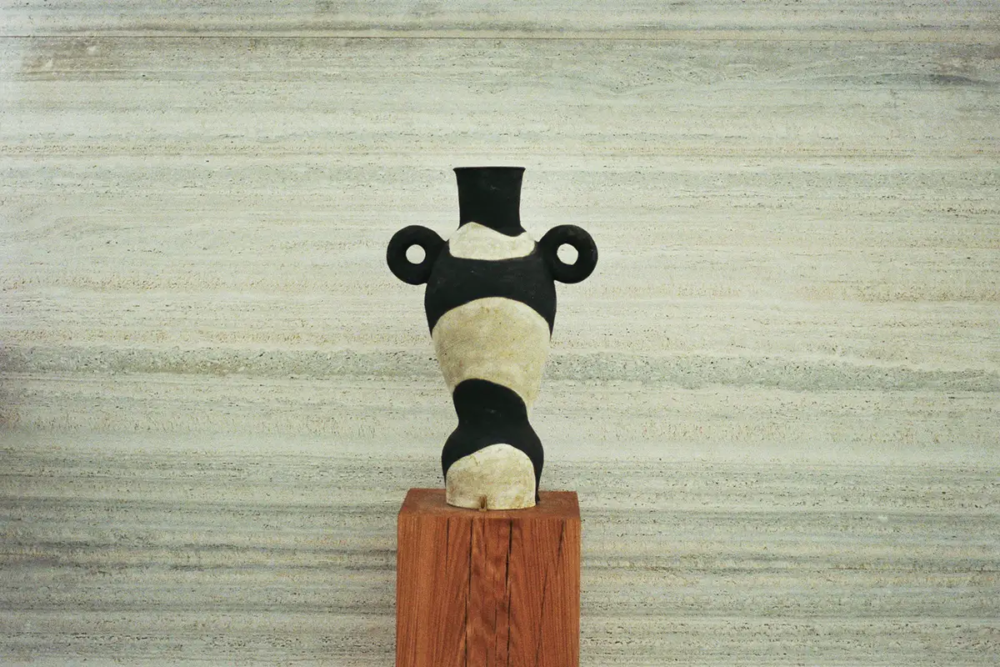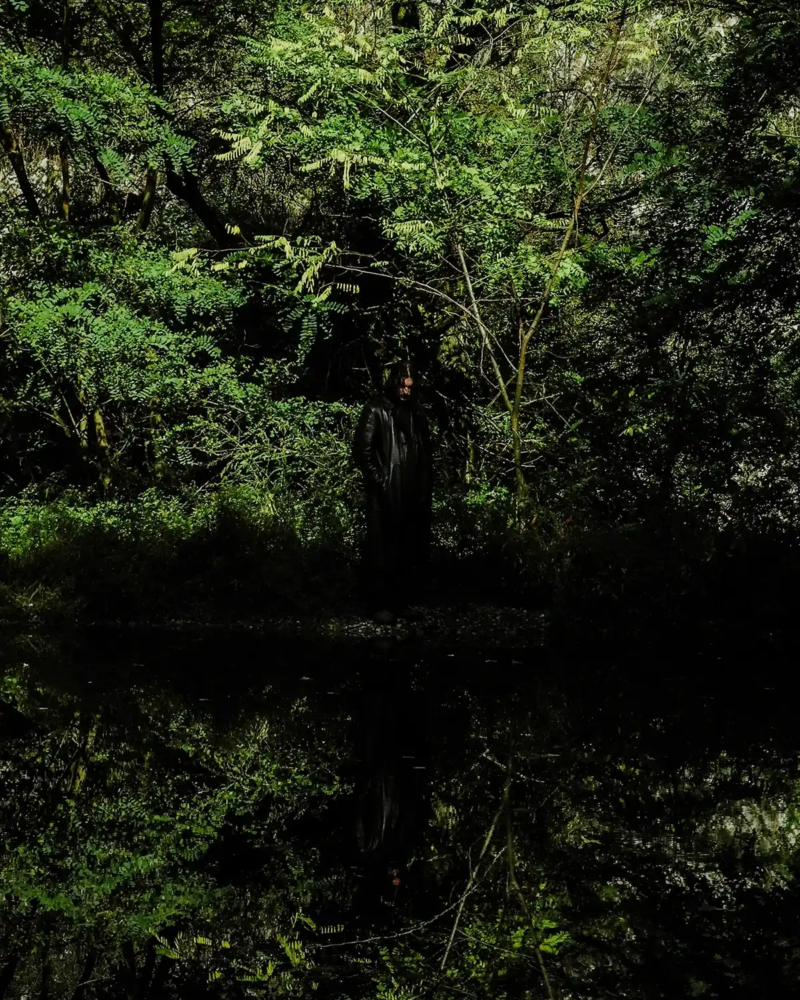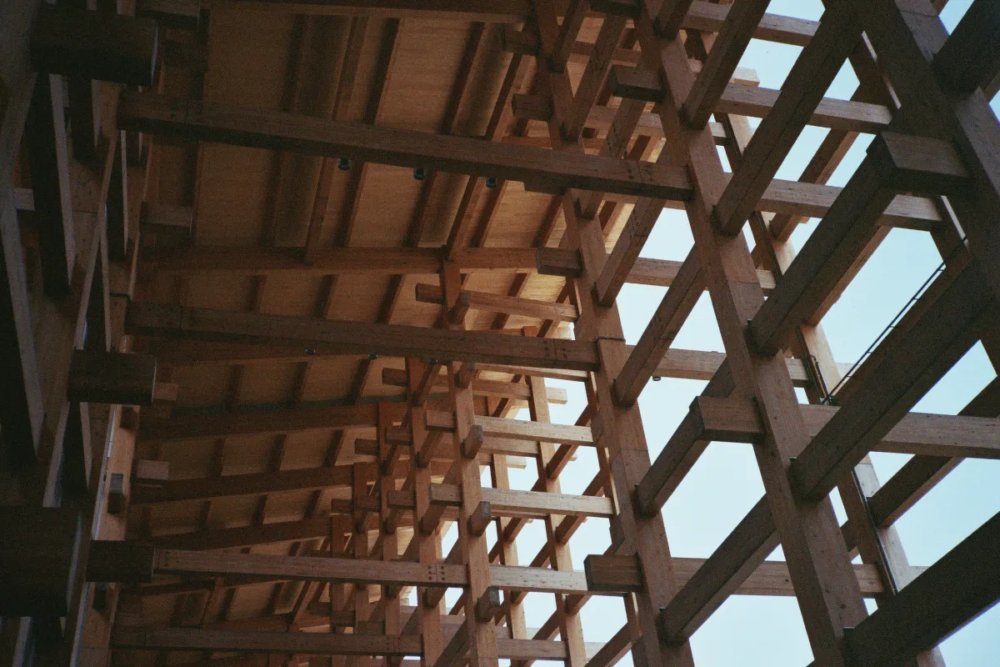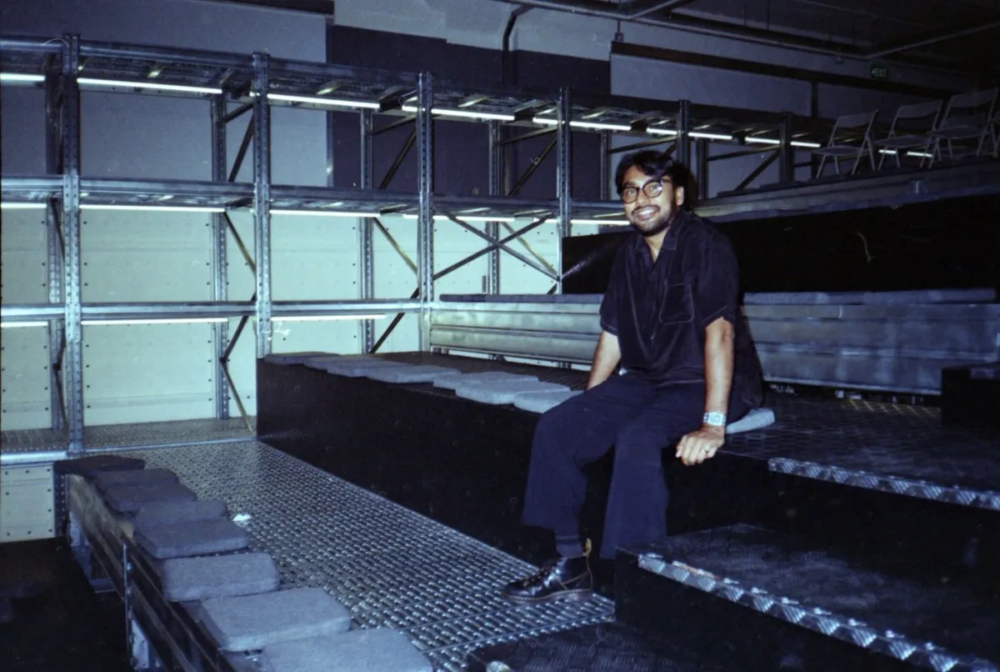
From Villa Malaparte to the Quisisana – Capri, rough with no decency
A conversation takes place in the garden of the Quisisana hotel about Capri, the roughness of the island with no decency: talking with Cesare Cunaccia. Meanwhile, Jacquemus is at Villa Malaparte
Malaparte, the villa, and the help of Minister Ciano, the Agnelli family – conversations from the garden of Quisisana
Curzio Malaparte, the arcitaliano. The villa at Punta Massullo was built the same year the laws for landscape protection came into effect. In 1939, Galeazzo Ciano – Mussolini’s son in law and Italian Foreign Minister – arranged for an indemnity payment of half a million lire to be made to Malaparte’s sick mother (quite a significant sum for those times). The money wasn’t enough to complete the villa. Minister Ciano ordered the reprinting of 100,000 copies of the magazine Prospettive, of which Malaparte was the publisher, sending another half a million to the writer’s accounts.
Malaparte was the son of a German textile engineer who worked in Prato – his real name was Kurt Suckert. His mother was Milanese. Malaparte had a sculpted head, hair slicked back, pronounced eyebrows, he used to wear trousers with boots. He was a man, certainly not poor, who lived beyond his means. He arrived in Capri from Forte dei Marmi, where his love affair with Virginia Agnelli found had started.
“Senator Agnelli wanted to get rid of Malaparte, to distance him from his daughter-in-law Virginia Bourbon del Monte di San Faustino. The woman was already a widow at that time, therefore free to have relationships with whomever she pleased – but a standard bourgeoise hypocrisy was well alive in Turin at that time – the Agnelli family did not appreciate the relationship with such a divisive and gossipy character like Curzio Malaparte.” In addition to Minister Galeazzo Ciano, the Agnelli family also contributed to financing the construction of the Villa.
The quoted phrases are by Cesare Cunaccia – among the few cultural figures today who can still recount much of what happened in Capri during the twentieth century and beyond. The stories and conversations come to life in the garden of Quisisana, which yesterday as today remains the matrix and meeting point for anyone who wants to pass through this island.
Who is the architect of Villa Malaparte? The authorship of the project and the reference to the architecture of Adalberto Libera
Formally, authorship of the architecture of Villa Malaparte has not been recognized. The intention was to emphasize how such a house appeared as an intellectual extension of Malaparte – but in any case, references to Adalberto Libera’s style are recognizable. In the Municipality of Capri, there are many files in the Archive; we can find plans of the rationalist and cubic houses by architect Piero Bottoni that are no longer there today. There is nothing about Villa Malaparte.
“The purplish red color is a precise reference to Adalberto Libera. If you go to Trento and see the post office building that Adalberto Libera built during the fascist era, you’ll notice many resonances. A Tyrolean stube recalled the years of the First World War. Tile floors were designed by Savinio, the brother of Giorgio de Chirico. The bedrooms are arranged on the lower floor except for the main one, as if it were the control room of a ship launched in the Tyrrhenian Sea. The hall was built by Master Amitrano like a Roman square, like a Greek agora, where the windows respond to the fireplace. At the bottom of this fireplace, there is a tempered glass so that through the flames you can see the Faraglioni. On the rooftop terrace where he used to ride his bicycle, the crescent-shaped solarium let Malaparte sunbathe naked. The house was his monument, a cenotaph, a spaceship. Capri is the island of the Sun – at that time, everyone was obsessed with exaggerated tans, oblivious to skin cancer.
Jacquemus at Villa Malaparte – sexual intimacy, modesty
Jacquemus is about to present his collection at Villa Malaparte these days: for fashion, it means blending the style of a mercantile city like Marseille with an Italian imagery: the war with the Nazi Germans; the dolce far niente of the Americans; the Roman and Neapolitan nobility; the roughness of the boys along the cliffs. In summary, Jacquemus is that boy who has used his physical prowess, the hair of his masculine body mixed with those of his husband Marco Maestri. Today they have two children – twins Mia and Sun. More than the imagery of the south of France, the cultural contrast with Capri is understood in the display of both physical and sexual intimacy.
1950 – the Quisisana and Caprese Modesty, the Roughness of an Island and the “Civilities”
Flashback to the summer of 1950. Late at night, on the patio of the Quisisana – two young people indulge in sensual kisses. They are long, artistic, and deep kisses, punctuated by shivers and body undulations – as reported by the policemen filing a report at the police station. Those young people were a danger to public morality, already so difficult to contain in this climatic station. The next day: Scandal in Capri! – national newspapers headline. The waiters at the Quisisana stand up in defense of the lovers: “So many of these things happen on the terrace of this hotel,” they snobbishly reply to journalists hunting for details.
A story appeared in La Stampa by Vittorio Gorresio – the title was The Innocence of Capri: it recounted how, during the summer, a multitude of young Americans had arrived in Rome for the celebration of the Holy Year – but none of them could any longer tolerate the pedantic interferences of the Church and the Christian Democracy regarding nudity. All the young people moved to Capri.
Decency Caprese (Caprese Modesty) is the title of a book by Fausto Esposito, published by Edizioni La Conchiglia. The question seems legitimate to most: why in Capri does the sense of decency seem to lose so much substance, almost becoming a negligible yawn? There is certainly no need for Jacquemus – but any pretext is good for these scattered stories. The “cortesie” were offered by sailors and local farmers to wealthy aesthetes who asked for their sexual pleasures – no decency, but complicity.
“One must leave the central places, to rediscover the stories and myths of a harsh land, almost malevolent in this roughness that restores an original sincerity. We are in the early twentieth century. Between the two wars, all the spies of Europe convened in Capri. Hitler and Goering landed there obsessed that the Grail was in Capri. The Prince of Hesse, husband of Mafalda di Savoia and artistic agent in Italy for Hitler, is their long arm.”
Krupp was an industrialist, his profit was a German symbol
“Krupp arrived in Capri with a yacht that had been registered under the name Puritan. Rumors, which are still spread by gossip, insinuated that the Capri residents sent their boys there in exchange for gold coins. The community received as a gift from the steel magnate of Essen the Gardens of Augustus and the descent among the rocks at Marina Piccola – named the most beautiful street in the world. Friedrich Alfred Krupp was welcomed with all honors. He financed the construction of the elementary school – but they did not forgive him for providing the reason why the “cortesie” became a scandal”.
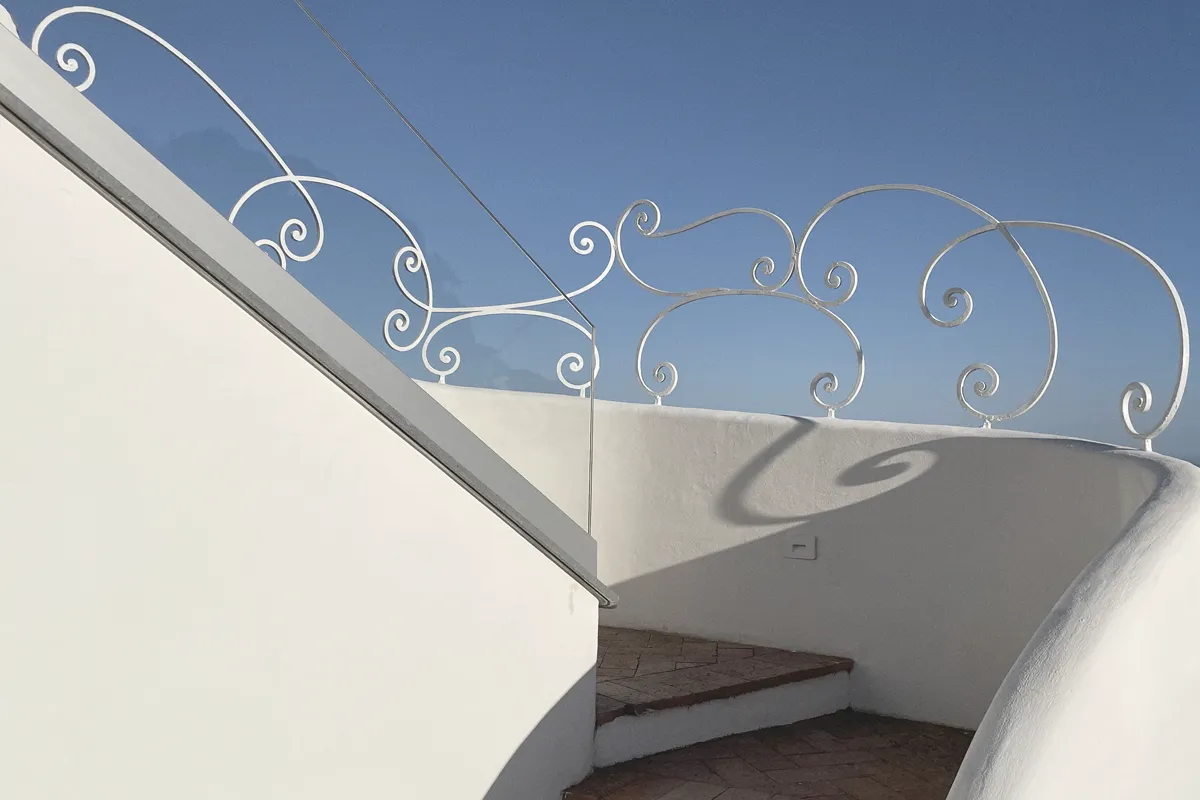
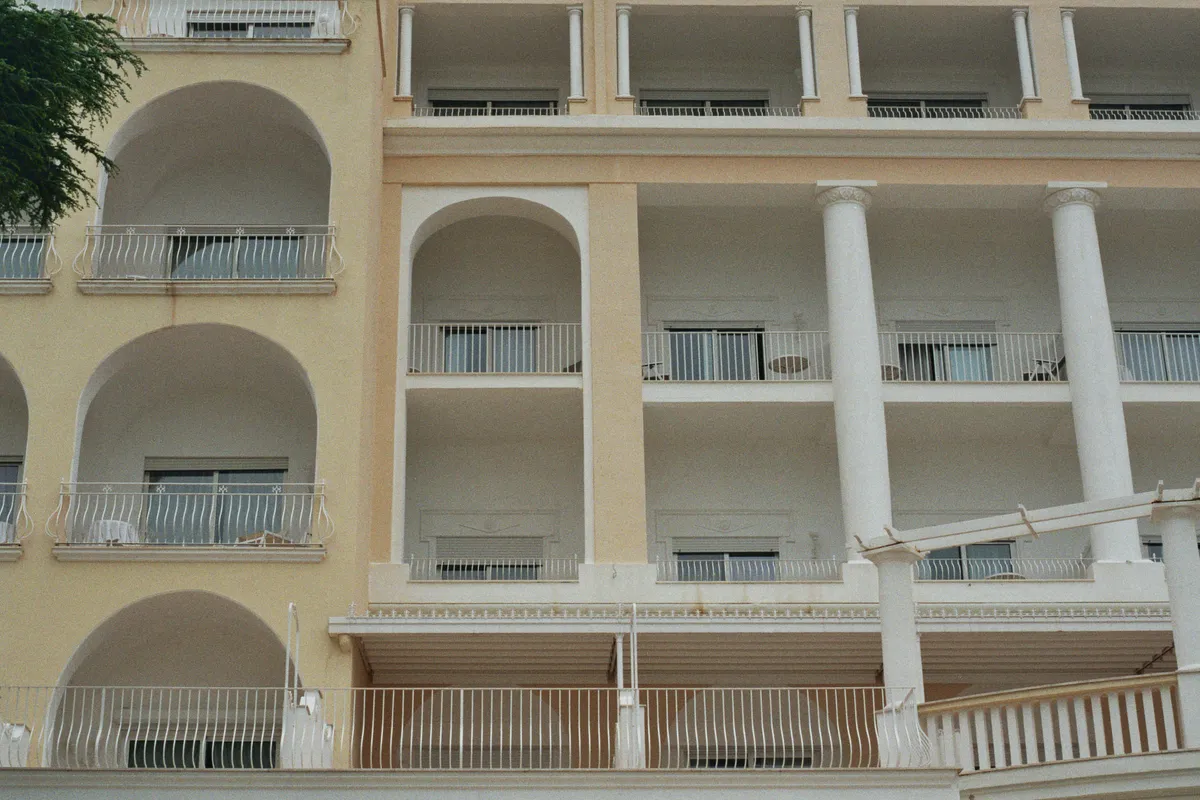
What are the “cortesie” in Southern Italy?
The “cortesie” – so named in Southern Italy – were the prostitution offered by girls and boys who earned good money without much effort. ‘Bella Carmelina in Capri danced tarantellas, posed for painters embodying the Mediterranean and rough sensuality of the genius loci. She recounted suggestive myths and ancient stories. She ended her life in suicide in 1950, already old, a forgotten relic. The islanders had no prudery – they were simple people. They were annoyed by the noise that Krupp’s scandal fueled and did not come to his defense. While Donna Lucia Morgano, owner of the local café Zum Kater Hiddigeigei, always continued to protect Jacques de Fersen and his excessive existence nestled at Villa Lysis.”
“Piero Bottoni was an architect, urban planner, designer, and rationalist theorist from Milan, a member of the Communist Party. He built his hermitage between 1958 and ’65. In 1968-69, he designed Villa la Quercia, inside the rock crevice of the cave known as Fra’ Felice, which had belonged to Alfred Krupp, overlooking Marina Piccola. Krupp habitually slept at the Quisisana or aboard the Puritan and used the cave – which he had rearranged – for his intellectual, musical, or carnal symposia. From that cave sprang his ruin, expulsion from the Kingdom of Italy, and the media pillory that ultimately forced him to suicide in 1902”.
“In the context of those events, the Neapolitan socialist-inspired newspaper La Propaganda began to fan the flames describing the island as Capri-Sodom. It was above all Matilde Serao who raised suspicions on the pages of Il Mattino. Those scandalous insinuations overwhelmed Krupp. In the gloomy Wilhelmine Germany, where the young Emperor Hohenzollern and his inner circle had been accused of similar sins, these slanders and accusations mounted until they became unbearable for Alfred Krupp.”
Capri agrarian, rough and rustic. Ruins emerged from the earth because the patches of land were plowed before planting
Ischia is a green island, with water and thermal springs, fields, and lush crops. Capri is the Blue Island: rock, water, and sky. Blue like the lizard of the Faraglioni. In Roman times, Capri was acquired by Augustus as imperial property from the Municipium of Naples. Via Camerelle owes its name to the spaces for collecting rainwater. The cisterns worked sometimes until recent times, connected to the aqueduct of Naples.
Capri’s sirens were not good eminences. Rough sirens – they were nothing more than the Capri residents. The islanders in ancient times lived off smuggling and piracy. They gave wrong light signals to the boats entering the Gulf. The seabed was difficult, sandy and rocky, wooden hulls smashed on the cliffs. Instead of providing aid, there was plundering of the shipwrecked vessels.
The Americans in Capri, the Rest Camp, and the Germans – Ms. Collins at the Quisisana, one night at Number Two, and suite 221
“Americans arrived in Capri as early as the mid-nineteenth century. Southern Colonel McCowan settled at Casa Rossa in Anacapri. Towards the end of the World War Two, they formed a stable colony that stopped here during the final phase of the conflicts. Capri from 1944 was a Rest Camp – that is, the place where American soldiers – mostly US Air Force pilots – came to rest and heal the wounds of war, both physical and emotional.”
“At the Quisisana, which was the headquarters of the Rest Camp under Colonel Woodward’s command, it was tradition to celebrate July 4th, the anniversary of American independence, every year. The Quisisana was originally a winter sanatorium for sick or weak northern people in search of sun – hence the name. It later became the center of every party.”
“The last German contingent in 1943 was barricaded at the lighthouse in Anacapri. At the helm was a young officer who had studied archaeology and refused to obey the order to blow up the mines positioned everywhere. He only asked to be allowed to reach Naples in peace with his 700 soldiers – the Italians consented. A bloodless liberation amidst many wartime horrors. The Capri residents were hidden in the caves and saw the bombs raining down on Naples and Salerno, expecting the worst – they couldn’t believe their eyes when they saw the German contingent leaving the island without firing a shot.”
In October 1950, Ms. Miriam Collins stayed in suite 221 at the Quisisana. The American heiress owed her fortune to cotton cultivation. Among her luggage was a box containing pins and necklaces, in gold, emeralds, sapphires, diamonds, and rubies. Not for nothing, many addressed Ms. Collins as the Queen. Among the tables on the terraces and in the Quisisana garden, the night was young – when Ms. Collins, surrounded by a group of boys brought from Milan and Perugia and by a group of cheerful Americans, decided to take those few steps that separate the Quisisana from the door of Number Two.
It is said that the Queen was in a great mood. She was not a sensual woman but one of those modest Americans who observe the world in a pink light. At Number Two, the bottles emptied, and the glasses filled up – some flew in the noise of the club. It got late, and the Queen invited everyone to her suite 221. She wanted to offer the company something more to drink. A Turkish lady and a black pianist – the bartender, Toni Grandi went up to the room, and he threw himself onto the Queen’s bed. The others recounted having seen him asleep and then semi-conscious, joking or trying to seduce her. What came afterwards, remained a mystery.
Capri: Edda Ciano and Chantecler – the multicolored rooster
In Capri, a Bengodi persisted as the fascist regime banned it as a mortal sin. An international and unregulated café society fueled intellectual power. Eccentricity and tolerance, until the advent of racial laws. “In Capri, there is the Duce’s daughter, Edda – who had married the Foreign Minister Galeazzo Giano mentioned above. She was the true Queen of Capri before the Second World War. From her villa, she dominated the island. Surrounded by a platoon of women, she presented herself with an aesthetic sophistication that clashed with her father’s coarse populism. Edda Ciano was Mussolini’s paradox.”
“Chantecler had a sort of enclave at the beach club La Canzone del Mare, owned by the English singer Gracie Fields. His bond with Edda Ciano strengthened and became amitié amoureuse from 1946, when Edda Ciano was amnestied and returned to her island after the fall of fascism and the deaths of her father and husband. Chantecler founded the jewelry store in 1947 – legend has it that he started by transforming some jewels that Edda Ciano had saved from the seizure of her assets. Chantecler addressed Edda Ciano in public calling her countess. Chantecler is the multicolored rooster, gossipy, witty.”
The Ball of Kings in Naples, the road to the villa of the Serra di Cassano, Pupetto Sirignano, and the Marchesa Casati’s cheetahs
On September 3, 1960, in Naples, Duchess Elena Serra di Cassano opened the doors of the palace owned by her husband in Naples. A party that later was recounted as the “Ball of Kings.” The year 1960 was the year of the Olympics in Naples, and sailing regattas were held in the Gulf. The Queen of the Netherlands, the King of Sweden, the Maharani of Baroda and Jaipur. The Danish royal princesses, Juan Carlos, the young Prince of Asturias. Onassis and Callas in full love. The Aga Khan, Elsa Maxwell, and the Roman aristocracy. Grace Kelly and prince Ranieri decided at the last moment not to attend because the Queen of Greece allegedly whispered that she would not be pleased to meet an actress pretending to be a sovereign.
“Villa Cercola eventually became the home of Valentino and Giancarlo Giammetti in the late sixties. Prince Pupetto Sirignano lived in Villa Castello. He was married to Anna Grazioli, who strolled around Capri with a cheetah on a leash. It was a Capri custom – to walk through the alleys with cheetahs – in emulation of Marchesa Casati during the years when she had rented Villa San Michele in Anacapri from Axel Munthe. Mananà Pignatelli Cortes d’Aragona also had two cheetahs.”
“They were said to be leopards, but they were all cheetahs. The cheetah is more like a dog; it can be tamed. They were used by Indian rajahs for hunting. The leopard is a tiger. In Capri, the socialites walked with cheetahs – not with leopards – a quite significant difference. My father bred a variety of strange wild animals,” Cesare Cunaccia’s stories are streams of thought without rational order.
” Neapolitan patrician families took refuge here during the war – it is said that ‘La Dolce Vita’ was an invention of the fifties and sixties in Rome – but a true Italian Dolce Vita was born in Capri in the thirties and somehow continued during the subsequent wartime period, especially here at the Quisisana. Mona von Bismark’s villa, Il Fortino in Marina Grande, still exists. It has been altered over the years and through various changes of ownership. That house invented an unprecedented décor, defining an identity for Capri.”
Women in Capri dressed as men during the day and then went out in evening gowns at night, shoes were flat. Irene Galitzine walked around in tunic pants, her palazzo pajamas. Irene belonged to a family of Georgian princes. Born in Rome, at the Hotel De Russie where her family fled from the Bolshevik revolution. Oscar Wilde arrived at the Quisisana with Bosie. In the evening, they went down to the dining room, and the English present were indignant. The couple had to leave the hotel and was welcomed by Axel Munthe. Wilde had just been released from prison after being convicted of homosexuality by the court. The scandal in Paris caused by Jacques de Fersen, count or baron as one may call him, occurred a few years after Oscar Wilde’s events in England. Meanwhile, Marella Agnelli showed indifference to the peculiar friendship between her husband and the American First Lady, Jacqueline Kennedy. A telegram arrived from the White House: “More Caroline, less Gianni. Come back immediately”.
Jacques Fersen, the Swedish lover of Marie Antoinette, and the scandal of Condorcet and his sister, the Marchesa di Bugnano
The precise surname was Adelsward Fersen. The family owned the Longwy-Briey steelworks – Jacques Fersen inherited his fortune at the age of 22. “Matermania was a cave of ancient Orphic mysteries. It became an ideal hiding place for eccentric ceremonies, somewhat naive classical evocations at the end of the 19th century, and it was rumored that orgies were sometimes interrupted by the intervention of law enforcement. Fersen revered the memory of his ancestor, Marie Antoinette’s lover. The house, built in 1905 in complete isolation and exposed to the elements, Villa Lysis, was a temple of ‘sacred loves and sorrows,’ filled with sculptures by Gemito, decadent bric-a-brac, and artifacts of questionable value, all evoking the love story between Fersen and the French Queen.”
Jacques Fersen arrived in Capri at the beginning of the twentieth century – fleeing from Paris where he was no longer welcome. He had been accused of involving students from the Condorcet high school in homosexual orgies with satanic invocations. It was perhaps about relationships with young boys consummated with other members of the Parisian aristocracy, as Proust would know. The count went to trial and was imprisoned for five months. No woman of good society would ever marry or cover him from that moment on. It would have made no sense for him to continue surviving in Paris, banned from salons and social circles.
He arrived in Capri and built Villa Lysis, living with his Roman lover Nino Cesarini. He continued to hold his orgies in the Matermania cave, before eventually committing suicide with champagne and cocaine in 1923. In the meantime, Villa Lysis had become the cultural and aesthetic center of the island. Nino Cesarini inherited it from Fersen and rented it out to cover expenses. The tenants were exponents of international homosexual culture, attracted by the legend and scandal of those places.
The sister of the deceased nobleman, Germaine, married in Naples and became the Marchesa di Bugnano. She was supported by the fascist government for which her husband was in the front line, and kicked them all out.

